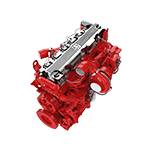Jul . 30, 2024 00:23 Back to list
Understanding the Role and Importance of Brake Drums in Vehicle Stopping Mechanisms and Safety
The Function of a Brake Drum
Brake drums are crucial components of a vehicle's braking system, primarily found in older cars and some commercial vehicles, such as trucks and buses. Unlike the more common disc brake systems prevalent in modern automobiles, brake drums operate on a different fundamental principle. Understanding the function of a brake drum provides insight into automotive safety and performance.
At its core, a brake drum is a cylindrical component mounted on the wheel hub. When a driver presses the brake pedal, hydraulic pressure is applied to the brake shoes inside the drum. These shoes are designed to expand outward against the inner surface of the drum. The contact created between the shoes and the drum generates friction, which slows down or stops the rotation of the wheel, thereby bringing the vehicle to a halt.
One of the primary advantages of brake drums is their ability to provide a strong braking force. The friction generated is substantial, which means that brake drums are particularly effective for heavier vehicles that require robust stopping power. The larger surface area of the drum compared to that of a disc allows for greater contact with the brake shoes, resulting in effective braking performance, especially under heavy loads.
Another significant aspect of brake drums is their construction. Typically made from cast iron or a composite material, brake drums are designed to withstand high temperatures generated during braking. As friction develops between the drum and the shoes, heat is a natural byproduct. Well-designed brake drums can dissipate this heat effectively, preventing brake fade, which occurs when brakes lose their effectiveness due to overheating.
function of a brake drum

Moreover, brake drums can be more cost-effective than disc brakes. The simpler design and manufacturing process often result in lower prices. This affordability makes them a popular choice for some budget-conscious vehicles and applications. Additionally, drum brakes are usually self-adjusting, which means they can maintain effective braking performance over time with minimal maintenance.
However, brake drums also have limitations. One of the primary downsides is their tendency to generate more heat during extended use compared to disc brakes. This can lead to quicker wear on the brake shoes, requiring more frequent replacements. Furthermore, brake drums are often heavier than their disc counterparts, which can contribute to increased unsprung weight, potentially affecting handling dynamics.
Another consideration is that brake drums are generally less effective in wet conditions. Water can create a barrier between the drum and the brake shoes, resulting in diminished braking performance. This is where disc brakes have a significant advantage, as they tend to shed water more effectively, maintaining performance in adverse conditions.
In recent years, the automotive industry has seen a trend towards disc brake systems due to their advantages in performance, heat dissipation, and maintenance. However, brake drums remain a viable option for certain vehicles and applications where cost and durability under load are priorities.
In conclusion, the function of a brake drum is integral to the braking system of many vehicles. They provide a reliable and effective means of slowing down and stopping through the principle of friction. While they have their advantages, such as affordability and robust braking capacity for heavy loads, they also face challenges, particularly in terms of heat management and wet-weather performance. Understanding these dynamics is essential for car owners and manufacturers alike, as they continue to evaluate the best braking solutions for their vehicles.
-
Scania Brake Drums: OEM Quality for Optimal Safety & Durability
NewsAug.16,2025
-
R.V.I: Advanced Remote Visual Inspection for Precision
NewsAug.15,2025
-
Discover HYUNDA: Innovative Vehicles, Equipment & Solutions
NewsAug.14,2025
-
R.V.I: Unlock Advanced Insights & Real-time Performance
NewsAug.13,2025
-
Kamaz Brake Drum: Durable & Reliable for Heavy Duty Trucks
NewsAug.12,2025
-
Heavy Duty Iveco Brake Drum - Premium Quality & Safety
NewsAug.11,2025
